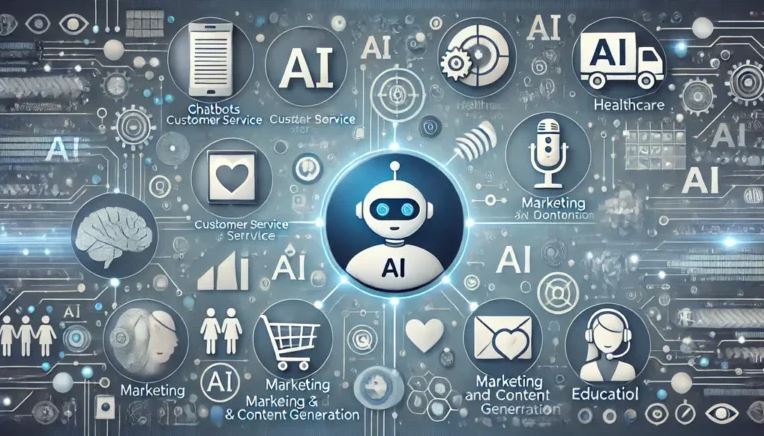Customer service teams often face the same questions day after day. They type similar answers repeatedly, causing delays for customers and burnout for agents. This repetition leads to inconsistent answers and makes it hard to maintain quality as teams grow.
New technologies using AI for customer support are changing this pattern. These tools can draft accurate answers that sound natural, check facts against company information, and learn from how agents edit their suggestions. This helps teams provide faster, more consistent help without losing the human touch that builds customer relationships.
How AI-Generated Responses Work
AI response systems analyze thousands of past support conversations to learn what good answers look like. They notice patterns in how experienced agents handle different questions and what information they include.
When a new customer message arrives, the AI matches it to similar past questions. It then creates a response based on how those questions were answered successfully before. The best systems also check company knowledge bases to make sure the information is correct and current.
These systems keep learning over time. They watch how agents edit or approve their suggestions and adjust future responses to match the team’s preferred style and accuracy standards.
Benefits Beyond Speed
While faster responses are an obvious advantage, AI-generated answers offer many other important benefits:
Consistency Across Teams
Support teams often give different answers to the same question. This happens because:
- Agents have varying levels of product knowledge
- Training materials get outdated
- Personal writing styles differ
- Time pressure leads to shortcuts
According to studies, nearly 8 in 10 companies are already using AI to enhance their customer service experience. AI systems help by suggesting standard answers based on the best responses from the entire team. This creates a consistent voice and ensures every customer gets equally accurate information regardless of which agent helps them.
Reduced Agent Burnout
Writing the same answers repeatedly is mentally draining. Many support agents leave their jobs because of this repetition and the stress of handling high ticket volumes.
With AI handling the first draft of routine responses, agents can focus on:
- Adding personal touches to each interaction
- Solving more interesting, complex problems
- Checking for accuracy rather than creating from scratch
- Handling more conversations without feeling overwhelmed
This change in daily work makes the job more satisfying and reduces turnover.
Better New Agent Training
New support team members face a steep learning curve. They must understand products, company policies, and how to communicate effectively—all while handling real customer issues.
AI-generated responses serve as excellent training tools by:
- Showing new agents how to structure answers to common questions
- Providing accurate product information without memorization
- Demonstrating the company’s communication style
- Reducing pressure while they build confidence
New agents can start by reviewing and personalizing AI suggestions, gradually taking on more complex cases as they gain experience.
Types of Support AI Can Handle
Different customer questions need different levels of automation. Here’s how various types of support work with AI:
| Question Type | AI Role | Agent Role | Example |
| Simple FAQs | Full automation possible | Minimal oversight | “What are your business hours?” |
| Technical troubleshooting | Suggest solution frameworks | Add specific details, verify understanding | “My app keeps crashing after the update” |
| Account-specific issues | Draft responses using customer data | Verify information, add empathy | “Why was my account charged twice?” |
| Complex problems | Gather relevant resources | Create custom solution, use resources as reference | “I need to set up a custom integration” |
| Emotional situations | Recognize sentiment, suggest tone | Provide full human response with empathy | “I’m extremely frustrated with your service” |
This layered approach allows the right balance of efficiency and human touch for each situation.
Implementation Strategies
Start With Common Questions
Begin your AI journey by focusing on your most frequent questions. These offer the biggest time savings and have enough examples for the AI to learn from.
Look at your ticket data to find:
- Questions that come up daily
- Issues with standard solutions
- Requests for basic information
- Simple troubleshooting scenarios
Create response templates for these situations first, then expand to more complex topics as you see success.
Train With Your Best Work
AI systems learn from the examples you provide. Using your best past responses leads to better AI output.
Build a training library that includes:
- Answers from your top-performing agents
- Responses customers rated highly
- Examples that cover different customer scenarios
- Recently updated information
Avoid using outdated responses or examples with errors, as these problems will carry over to the AI’s suggestions.
Create Clear Review Processes
Even the best AI systems make mistakes. Setting up good review workflows keeps these errors from reaching customers.
Effective review processes include:
- Having agents check AI responses before sending them to customers
- Creating approval steps for sensitive topics or VIP accounts
- Tracking what suggestions get edited and why
- Setting up automatic checks for outdated information
Over time, you can reduce review requirements for simple questions while maintaining strict oversight for complex or sensitive issues.
Monitor Quality Metrics
Track how AI affects your support quality using multiple measurements:
Customer satisfaction surveys help you see if people notice or care about AI involvement. Response accuracy tracking shows if the right information is being shared. Resolution time metrics reveal if issues are being solved faster. Ticket reopening rates indicate if answers are truly solving problems.
Watch these numbers closely when you first implement AI, and check regularly as you expand its use.
Common Challenges And Solutions
Maintaining The Human Touch
Customers dislike feeling like they’re talking to robots. AI responses sometimes sound generic or miss emotional cues.
To keep conversations feeling human:
- Train agents to personalize AI suggestions with customer names and specific details
- Add variety to response templates so they don’t all sound alike
- Make sure AI recognizes emotional language and flags it for human attention
- Allow agents to completely rewrite responses when needed
Handling Exceptions And Edge Cases
AI works best with common scenarios it has seen before. Unusual questions or unique situations can lead to incorrect or irrelevant suggestions.
Prepare for these exceptions by:
- Creating clear guidelines for when agents should ignore AI suggestions
- Building feedback loops so agents can report unhelpful responses
- Having expert agents review challenging cases
- Maintaining a knowledge base for unusual situations
The goal isn’t for AI to handle everything—it’s to handle routine questions well so humans can focus on exceptions.
Updating Knowledge As Products Change
AI systems need current information to provide accurate answers. When products, policies, or procedures change, AI responses must update quickly.
Set up processes for:
- Regular reviews of AI response templates when changes occur
- Flagging affected responses for manual updates
- Testing suggested answers against new information
- Temporarily increasing human review during transition periods
The best systems connect directly to your knowledge base so they automatically incorporate changes.
Setting Realistic Expectations
Teams sometimes expect perfect AI responses immediately or believe they’ll replace human agents entirely. Neither expectation is realistic.
Help your team understand that:
- AI suggestions will improve over time with feedback
- The goal is assistance, not replacement
- Some questions will always need human judgment
- Success means better agent experiences and faster customer service
Final Thoughts
AI-generated responses are changing how support teams work, but this change works best when it enhances rather than replaces human agents. The most successful teams use AI as a starting point, adding their judgment, empathy, and personal touches to create truly helpful customer experiences.
Finding the right balance takes time and experimentation. Each support team has unique needs and customers with different expectations. The best approach is gradual—start with simple, common questions where AI can be most helpful, then expand as both the technology and your team grow more comfortable with the process.
The future of customer support isn’t purely automated or purely human—it’s a thoughtful combination that uses each for what they do best. AI handles speed, consistency, and knowledge retrieval, while humans add understanding, problem-solving, and the personal connection that builds customer loyalty.




